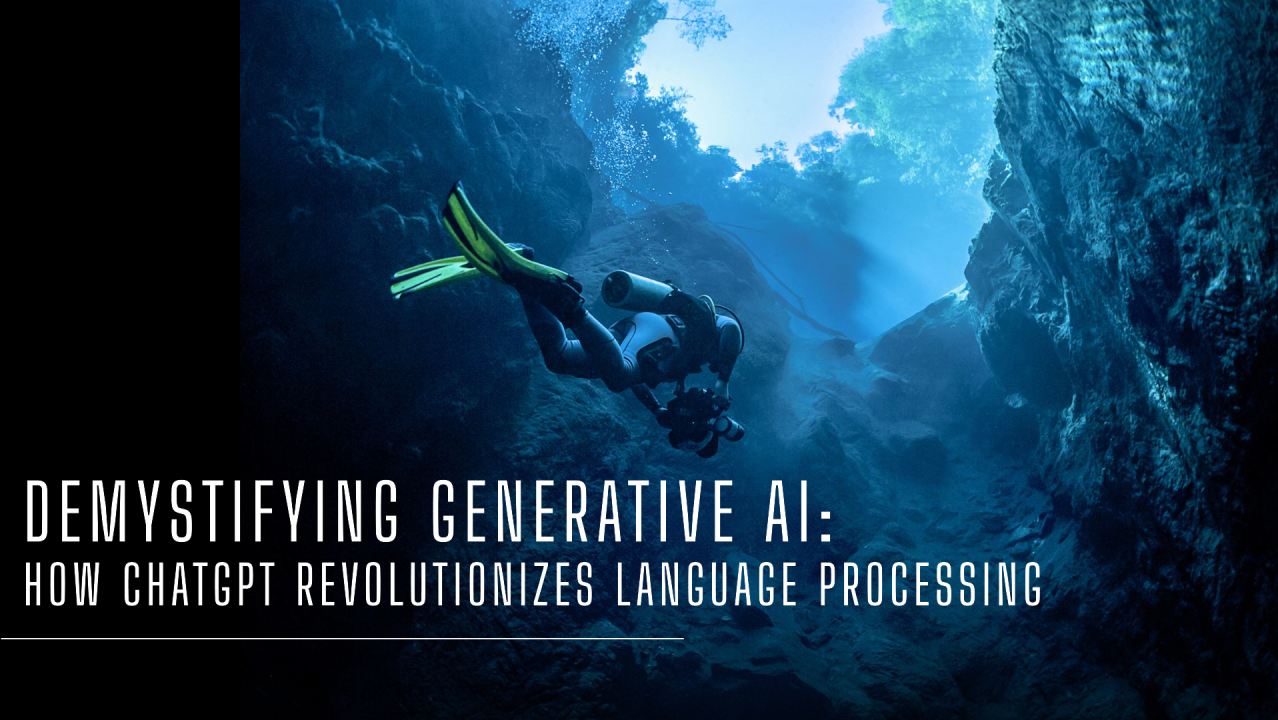
Demystifying Generative AI: How ChatGPT Revolutionized Language Processing
Generative AI has transformed how we interact with the written world around us by enabling machines to create content remarkably similar to human outputs. Among the most prominent advancements in this domain is OpenAI's ChatGPT, a model widely recognized for its ability to engage in natural language conversations, complete texts, and generate original content. Understanding the mechanics behind such a powerful tool is essential for grasping its potential applications and implications across various industries.
Understanding Generative AI
Generative AI refers to algorithms that can produce new content, whether text, images, or audio, by learning from a vast amount of existing data. These models use machine learning techniques to create outputs that are coherent and often indistinguishable from those produced by humans.
Key Concepts:
Transformers: Transformers are a revolutionary type of model architecture in the field of machine learning, particularly for tasks involving sequential data like text. Traditional models, such as recurrent neural networks (RNNs), process data sequentially, meaning they handle one element at a time, which can be slow and inefficient for long sequences. In contrast, transformers use a mechanism called self-attention to process all elements of a sequence simultaneously, which greatly enhances their efficiency and performance (Vaswani et al., 2017).
How Transformers Work:
1. Input Representation: Transformers start by converting each word in a sentence into a numerical representation called a "vector." This process, known as "embedding," translates words into a form the model can process. These vectors capture the meaning of the words in a high-dimensional space. Think of it like plotting a point on a graph, except this graph is in a three-dimensional space.
2. Positional Encoding: Unlike humans, transformers do not inherently understand the order of words in a sentence. To address this, transformers add positional encodings to the word vectors. Positional encodings are unique vectors that represent the position of each word in the sentence, helping the model understand the order of words.
3. Self-Attention Mechanism: The self-attention mechanism is the core innovation of transformers, and builds upon the concept of attention. It allows the model to weigh the importance of each word in a sentence relative to every other word. Here’s a step-by-step breakdown:
Example: Consider the sentence: "The quick brown fox jumps over the lazy dog."
4. Parallel Processing: One big advantage of self-attention is that it allows the model to look at all the words in a sentence simultaneously. This parallel processing is much faster than older models that look at words one at a time.
5. Capturing Long-Range Dependencies: Self-attention can connect words that are far apart in a sentence, capturing long-range dependencies. This is important for understanding complex sentences where important information might be spread out.
Example in Action: When generating text, self-attention helps the model keep track of all the words it has seen so far, ensuring that it produces coherent and contextually accurate sentences. For instance, if the model is writing a story, it can remember details from earlier paragraphs and use them correctly later on.
Training Data
Training data is the foundation upon which AI models like ChatGPT are built. It consists of large, diverse datasets that provide examples of the type of content the model is expected to generate or understand. The quality and diversity of this data are crucial for the model's performance.
Components of Training Data:
Training Process:
Example in Action: To train ChatGPT to be helpful and engaging, the model might be fine-tuned with datasets containing high-quality conversations where responses are informative, relevant, and polite.
How ChatGPT Works
Architecture and Training of GPT-4: ChatGPT, particularly in its GPT-4 iteration, builds upon the transformer architecture. This model processes input data through layers of attention mechanisms, enabling it to understand and generate text based on context and learned patterns. The training process involves pre-training on a large corpus of text data to predict the next word in a sequence, followed by fine-tuning with specific datasets to enhance performance and alignment with human expectations (OpenAI, 2023).
Comparison Between GPT-4 and GPT-3.5
Behind the Scenes of GPT-4
Multimodal Capabilities
One of the standout features of GPT-4 is its ability to handle both text and image inputs, making it a more robust tool for various applications. This multimodal capability allows it to generate text based on visual prompts and vice versa, broadening its utility. Although this is great in theory, generative imaging has a lot of work to progress for GPT. It often struggles to product realistic pictures without substantial prompt tweaking.
Self-Attention in Transformers
The self-attention mechanism, as highlighted by Vaswani et al. (2017), is a core component of transformer models like GPT-4. As discussed previously, self-attention enables the model to weigh the importance of different words in a sequence, regardless of their position. This mechanism is crucial for understanding context and maintaining coherence in generated text.
References
Student at California Institute of Applied Technology
9 个月This Post makes me excited for the future, it really breaks down everything that AI can do and benefit us.